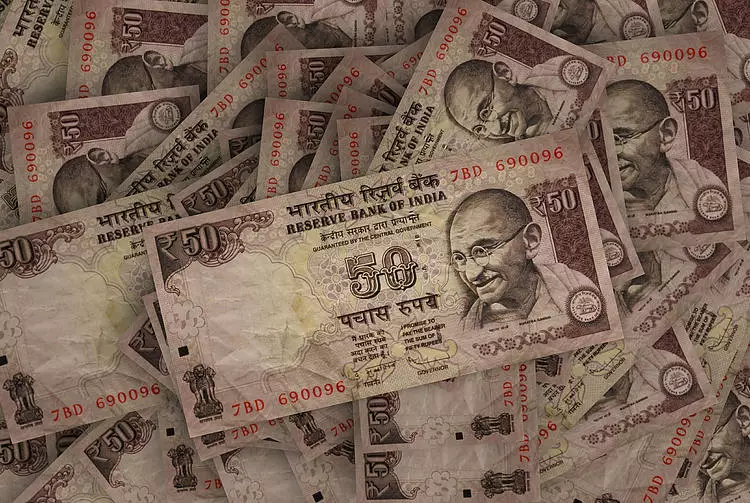The Indian Rupee (INR) struggled to find traction against the USD on Thursday, as concerns over rising inflation continued to weigh on the currency. The Reserve Bank of India’s (RBI) monthly bulletin highlighted the urgent need to bring down inflation to safeguard economic growth. Additionally, investors turned their attention to the upcoming release of the US GDP data for Q3. This article will analyze the factors contributing to the weakening of the Indian Rupee and explore the potential outlook for the currency.
The RBI’s monthly bulletin emphasized the importance of achieving the medium-term target of 4% inflation and maintaining it consistently. The headline retail inflation rate in India rose to 5.55% in November, surpassing market expectations. The RBI projected that Consumer Price Index (CPI) inflation would average 4% in July-September 2024. This relentless rise in inflation poses a significant risk to India’s economic growth, as acknowledged by RBI Governor Shaktikanta Das. He stressed that achieving a durable 4% inflation rate should not be a one-time event, but rather an ongoing objective for the Monetary Policy Committee (MPC).
Investors are closely monitoring the release of the US Gross Domestic Product Annualized (Q3) data, which is expected to remain steady at 5.2%. Furthermore, attention will shift to the Core Personal Consumption Expenditures Price Index (PCE) for November. Analysts forecast a monthly increase of 0.2% and a year-on-year growth of 3.3%. These economic indicators will influence market sentiment and potentially impact the Indian Rupee’s performance.
Foreign Exchange Reserves and Bond Market
India’s foreign exchange reserves stood at $606.9 billion on December 8, 2023, making it the fourth-largest holder of reserves among major countries. The increase of $28.4 billion during 2023-24 demonstrates the country’s strong position in managing its foreign currency assets. Additionally, the total outstanding bonds traded in the Indian market rose to $2.47 trillion in the September quarter, signaling robust investor confidence.
The International Monetary Fund (IMF) recently reclassified India’s exchange rate regime from floating to a stabilized arrangement. This reclassification reflects the country’s efforts to maintain exchange rate stability and enable smoother trade operations. The RBI actively intervenes in the forex market to prevent excessive volatility and ensure a stable Rupee exchange rate. Additionally, adjusting interest rates is another tool used by the RBI to manage inflation and influence the Rupee’s value.
US Consumer Confidence and Existing Home Sales
Consumer confidence in the United States recorded a significant increase in December, indicating strong optimism among consumers. The annual rate of Existing Home Sales also exceeded market expectations in November. These positive indicators suggest a favorable environment for the US economy, potentially leading to a strengthening of the USD.
Technically, the USD/INR pair has been trading within a range of 82.80-83.40 since September. Despite holding above the key 100-day Exponential Moving Average (EMA) on the daily chart, the 14-day Relative Strength Index (RSI) remains below the 50.0 midpoint, indicating some potential challenges ahead. A decisive break above the resistance level of 83.40 could propel the pair towards the year-to-date high of 83.47 and potentially reach the psychological level of 84.00. On the downside, the key support level lies at the psychological mark of 83.00, with further support at 82.80.
The Indian Rupee is highly sensitive to various external factors. The price of Crude Oil, which India heavily imports, along with the value of the US Dollar and foreign investment levels, play a crucial role in shaping the Rupee’s trajectory. The RBI’s interventions in the forex market and the interest rate decisions also significantly impact the Rupee. Macroeconomic factors like inflation, interest rates, GDP growth rate, balance of trade, and foreign investment inflows further influence the Rupee’s value. A higher growth rate, a less negative trade balance, and higher real interest rates are generally positive for the Rupee, while higher inflation can have a negative impact.
The Indian Rupee faces downward pressure due to concerns over rising inflation, as the RBI emphasizes the urgency of achieving and sustaining the 4% inflation target. Market participants eagerly await the release of US GDP data and consumer confidence indicators, which could potentially shape the direction of the Rupee. Technical analysis suggests significant resistance levels for the USD/INR pair, with potential upside if key levels are breached. The Rupee’s value is also influenced by external factors, including Crude Oil prices, the US Dollar’s performance, and foreign investment inflows. As the RBI continues to actively manage the Rupee’s stability and adjust interest rates, future developments in these areas will be crucial in determining the Rupee’s trajectory.


Leave a Reply